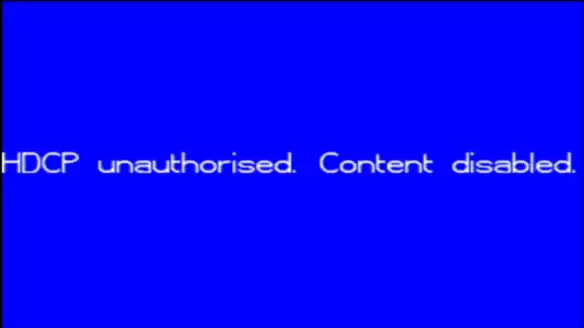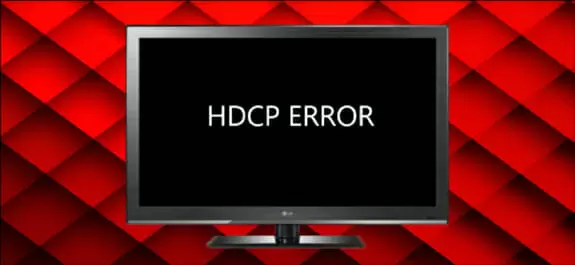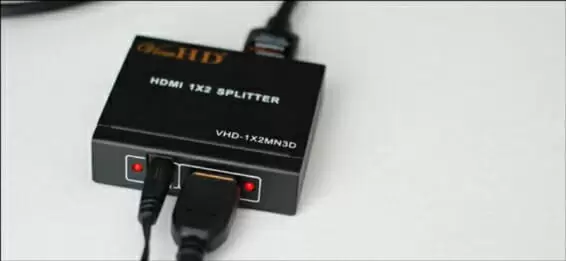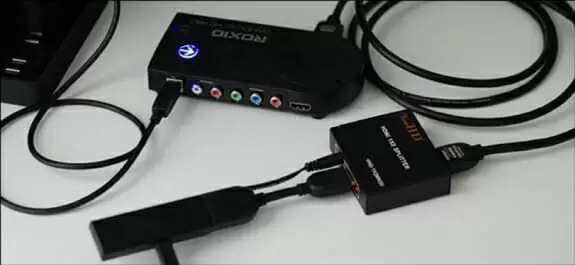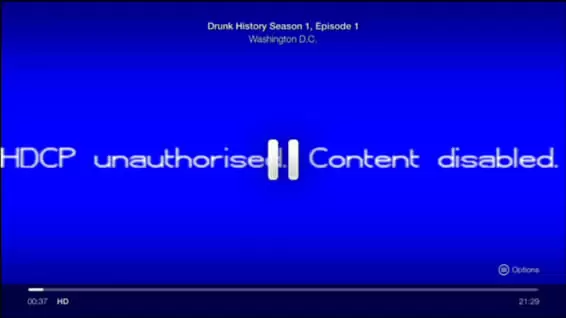HDCP (short for High-bandwidth Digital Content Protection) is a security feature, built directly into your HDMI cable. An HDCP-certified product is necessary to receive an HDCP-encrypted digital signal.
HDCP encrypts a digital signal with a specific key which then requires authentication by both the receiver and the transmitter. If the authentication fails, then so does the signal.
Although it might seem like a wonderful feature, HDCP can sometimes break and cause some problems which will prevent you from enjoying your viewing experience.
In this article, we’ll tell you all about HDCP, how it works, what errors it causes and how to fix those errors.
What is HDCP?
Simply put, HDCP is a form of DRM. If you don’t know what DRM is, it stands for Digital Rights Management, and it is something that prevents piracy, protecting content creators. DRM ensures that only people who’ve purchased the media can consume it.
Many years ago, you could watch a VHS tape while simultaneously recording its content to a new tape.
You’d put the tape in a VCR, and the signal from that VCR would feed into another VCR, with a blank tape inside which would record the first tape, and only afterwards would the signal be transmitted to your TV, letting you watch and record at the same time.
HDCP prevents this kind of stuff over HDMI. You can’t stream content and record it at the same time, without specific equipment which allows you to bypass HDCP encoding.
HDCP was created by an Intel subsidiary, Digital Content Protection LLC, and is described by its creators as a way of protecting high-value digital media from unauthorized access.
In order to stream HDCP media, you need HDCP-compliant hardware, which usually is the standard hardware you’d find in any store.
HDCP is present in almost every media device you can think of, such as Blu-ray players, cable boxes, video streaming devices, like Chromecast or Roku, and even in laptops and other HDMI-compatible devices.
The latest HDCP version is HDCP 2.3 and it was released in February of 2018, however HDCP is compatible across different protocol versions.
The Problem With HDCP
The main problem with HDCP is that there is a chance that your device doesn’t support HDCP. It doesn’t happen frequently, but manufacturers aren’t required to make their devices HDCP-compliant.
This means that if you do buy a non-HDCP-compliant device, you won’t be able to stream your content.
As long as one of the devices in the entire media chain doesn’t support HDCP, the transmission will not be successful.
In most cases, when you try to watch HDCP-compliant content in a device which doesn’t support HDCP, you’ll see an error message, like “HDCP unauthorized”, or “HDCP error”.
However, there are also cases in which no error message is displayed. In some scenarios, the HDCP compatibility error just results in a blank screen. Users will then be left to wonder what’s the problem with their device.
This also means that some of your old devices, even though they might support the right ports, like HDMI, are most likely non-HDCP-compliant. This means that you, for example, can’t turn that old monitor into a cheap video box.
HDCP can also be a problem for people who like to record their games.
Even though Sony released an update for the PS4 that unlocked HDCP, it couldn’t do it to the PS3, since HDCP was locked at the chip level. This means that PS3 players which wanted to record their games had to use external capture devices.
The problem with most DRM forms, is that it ends up hurting paying users more than it does to pirate ones. When people try to review stuff like video players, they can’t screenshot the interface while the video is running, due to HDCP. Obviously, that wouldn’t happen if the content was pirated.
How to Fix HDCP Problems
There is no reason for users to be forced to buy new devices just to be able to watch HDCP-compliant content, however, it is the only way. Unless you have an HDCP-compliant device, you won’t be able to watch HDCP-compliant media.
Unlike you would expect, there’s no official device you can plug in to older TVs to make them HDCP compliant. They really want you to buy a new device, or to resort to piracy.
There’s an alternative, though. Users with non-HDCP-compliant devices can buy an HDMI splitter which ignores HDCP requests.
To use such a device, you just need it to put it between the output device and the TV, or monitor, you’re using.
We understand why HDCP was invented, but there’s no actual reason for it to exist in the real world. Pirates will always be able to pirate content, and paying users will always have a slightly worse experience. In this case, the experience is a bit more than slightly worse, since there’s a chance you won’t even be able to watch your media.
Fortunately, HDCP-compliance is not something you have to worry about when buying a new device, unless it’s from a shady manufacturer. It is, however, something you need to worry about if you intend to capture your screen for whatever purpose. You won’t be able to while streaming HDCP content.
As you can see, the HDCP unauthorized screen displays when trying to capture a screenshot.
However, when using the HDMI splitter, things are slightly different.
It is something you seriously have to consider if your encountering HDCP problems when using your devices.

Petr is a serial tech entrepreneur and the CEO of Apro Software, a machine learning company. Whenever he’s not blogging about technology for itechgyan.com or softwarebattle.com, Petr enjoys playing sports and going to the movies. He’s also deeply interested about mediation, Buddhism and biohacking.

